External and internal stair railings for home and garden
The second floor in the house has a staircase. It is not enough to decide where it will be located, what type of steps will be, you also need to choose what type and type of railing for stairs. This enclosing structure sets the look and feel, which is very important for creating a harmonious interior.
The content of the article
Design, distances, dimensions
Railing for stairs are necessary for safer use, since they are a protective structure that prevents injury. There are models of stairs that do not provide for the presence of any protections. They may look interesting, but using such a ladder is scary. Usually stair railings consist of several elements:
- Support pillars. They are an obligatory part of the structure, they are installed at the beginning and at the end of each span and between them in increments of 50-60 cm. Support posts are also placed at the corners of the turntable. Must be strong, securely fixed as they bear the main load.
- Handrail. The structure that connects the tops of the support pillars serves as support during lifting and to create the envelope itself. The handrails can also be attached from the second side - to the wall. Such double handrails are made with a step width of more than 120 cm. The minimum height of the handrail is 90 cm, the maximum is about 100-110 cm. The second option is for tall inhabitants. For ease of use, if there are small children in the family, people of short stature, a second handrail can be installed below, which will be convenient for them to hold on to.
- Filling. This is an optional element, but more often than not, it is present in one form or another. The distance between the support posts (pillars) is 50-60 cm. If there are no children in the house, this space can be left blank. But usually balusters (vertical posts), longitudinal elements connecting the posts, patterned or forged filling, pieces of glass, plastic, etc. are installed in the intervals.
Such a simple design, and it has a great variety of options. And it is the railings for the stairs that give them a special charm and originality, set the style.
Materials
The main structural elements of the handrail for the stairs - the racks - are made of wood of different species and metal. Handrails can be made of metal, wood and plastic. In the case of filling, materials such as glass, plastic, ropes, textiles and many others are added. But even more often, stair railings are made combined - by combining two or three materials in one product.
Wooden stair railings
Wood has been used for the manufacture of stair railings for a very long time. It is good because you can make elements in any style. It is possible with a variety of carvings, patterns - for interiors in a classic style. Simple geometric shapes can be used - for more austere interiors. There is also an opportunity to design / paint / varnish in different ways.
What's also good is that you can make a wooden stair railings yourself. If you have little experience in joinery, you can find simple decor.The wood itself - due to the color, texture - is quite aesthetic, so that even simple products look great.
- In this case, “simple” does not mean “bad”. The main thing is that the design of the railings fits into the concept of interior decoration
- Wooden railings can even be in the palace interior
- Some carvings and decorations transform a simple staircase
- Laconic styles - minimalism, modern, loft - fit better with a simple design
- Figured balusters and support pillar decorations are traditional forms of decorating stair railings
- If you add a carved addition
- And only varnish was used / not enough for wood of different colors
If we talk about what types of wood it is better to make railings for the stairs, then harder varieties with a pronounced structure are preferable: beech, oak, cherry. Conifers - cedar, larch. They make stair railings from pine and spruce, but pine products are too soft, you have to be careful, and spruce is difficult to handle. The rest of the breeds listed above, in principle, are also not a dream in processing, but they are very beautiful, so they usually close their eyes on difficulty.
Metal railings for stairs
Metal railings are perhaps even more diverse. There are three ways to make metal stair rails: welding, forging, assembly from pipes and fittings.
Moreover, "forging" is not necessarily a hot process. there is cold forging machines, which make it possible to make a wide variety of twisted and bent elements. Plus, there are possible "hot" processes. This in itself gives a lot of room for imagination. You can also use different metals and rolled products:
- Round or square bar.
- Round or shaped (square or rectangular) pipe.
In this case, the metal can be: ordinary black or structural steel with subsequent painting with a variety of paints, stainless, nickel-plated, chrome-plated pipes of various sections. There are even options with bronze or copper elements.
- Forging makes it possible to realize any fantasy
- Plant motifs - not only flowers and leaves
- Geometry that is highlighted with color ...
- Metal railings for stairs can be of different styles
- Complex, simple, geometric ...
- Cast iron stair railings are rare today.
- For Art Nouveau interiors
- For nature lovers
Since the metal is more ductile, so many things are not made of it. Floral ornaments, geometric, fantasy, those that are even difficult to define.
Glass
In the usual sense, glass is a fragile thing, but a special one is used for stair railings - tempered or laminated. Laminated glass - duplex or triplex. It is a sheet of glass glued with a transparent polymer film. The technology is such that the transparency of the glass does not suffer at all, and the strength increases significantly. A similar material is used for machines. Even if it breaks with a strong impact, it will not scatter, and the fragments will hang on the film.
Tempered glass is made using a different technology. It is heated to a high temperature, then, blowing air from both sides, is quickly brought to normal temperature. After such processing, it becomes many times stronger, withstands shock loads well, breaking, crumbles into fragments with smooth, not sharp edges.
In general, both types of glass are safe. In addition, they look good, as such designs do not look massive and heavy. Glass can be transparent, tinted, colored. If you wish, you can make a drawing like a stained glass window.Since the filling is solid, this type of fence can be considered absolutely safe. The remaining technological gaps of a few centimeters are not dangerous even for small pets.
- The handrail on the glass stair railing can be wood, plastic or metal
- A very interesting option: the pillars are made of wood, and between them there is just glass
- A common railings for stairs made of wood and glass. In some interiors it is worth following the rule: the simpler, the better.
- For more extreme interiors
- And the stairs do not seem so heavy and cumbersome ...
- There may also be a drawing on the glass ...
- Wood version with frosted glass
- Almost classic ...
There are glass railings that have wooden or metal support posts and handrails. These models can rather be called combined. Most of the glass is placed between the pillars, and a handrail is made from the same material on top. Such railings are practically weightless, do not block the view. They can be used both indoors and outdoors. They are especially good for balconies, loggias or terraces, as they do not interfere with the view.
There are also "pure glass" railings for stairs, in which there is nothing but glass. An interesting option for non-standard interiors. For these structures, duplex or triplex with a thickness of 10 mm or more are used, which increases their cost compared to “frame” options, where you can install cheaper tempered glass.
Plastic in handrail for stairs
In stair railings, plastic can be used as handrails. Round, oval, rectangular plastic handrails are a budget and practical option. Budgetary - because such railings are inexpensive, practical - because smooth plastic is easy to wipe off, and it does not wipe, does not require replacing the paintwork. The only thing that can damage it is a significant shock load. But it is critical for all types of pearls.
- Metal stairs with plastic railings are one of the most practical and durable options
- About this profile, round or oval
- Plastic handrails on metal railings look good
- Type-setting plastic balusters are assembled from ready-made elements
Balusters can also be made of plastic. In this case, a metal core is inserted into the plastic (usually PVC). It will carry the load, and the plastic is just a decorative element. Stairs with plastic elements are cheaper, but no less durable. After all, PVC, of which stair railings are usually made, does not rot, does not lose its properties over the years. The material is unnatural, but practical.
Combined stair railing: beautiful options
A lot of unusual and decorative stair railings are obtained by combining two or even three materials. The combination of wood and metal, wood and glass, metal and glass, all three of these materials give an unimaginable number of options and variations.
- Welding frames, inserting transparent glass into them is simple and effective
- With patterned glass, it looks no worse ...
- Wood, forging and glass - everything is harmonious and emphasizes the advantages of the "neighbors"
- A common railings for stairs made of wood and glass. In some interiors it is worth following the rule: the simpler, the better.
- Wood version with frosted glass
Scope of use
At the location of the stairs there are internal and external. Both those and others are equipped with handrails. Usually, handrails for indoor stairs have a more refined infill than for outdoor ones, but this is not always the case. There are very beautiful forged or wooden railings for porch, stairs to the second floor.
Selecting the type of design
If the house has a balcony, terrace, it is logical if their fence will exactly repeat the pattern of the railing for the outer staircase. The exception is usually the stairs to the attic. They are trying to make them less noticeable in this case, most often they use a simple attached ladder, which can be removed or laid along the base.
If there is a need to make a stationary lift, you can beat it, make it screw or with turntables, and arrange a beautiful railing. The second option is to make a simple vertical ladder by welding small handrails on the sides. How much this option will fit into the design of the house is a question of architecture, but it is definitely cheaper.
Plastic and glass for outdoor railings
If we talk about materials for the railings of outdoor stairs, then you can use any: wood, metal, glass, and plastic. When choosing plastic handrails or filling, it is necessary to clarify whether it can withstand operation at subzero temperatures and exposure to ultraviolet radiation. If yes, you can bet without hesitation.
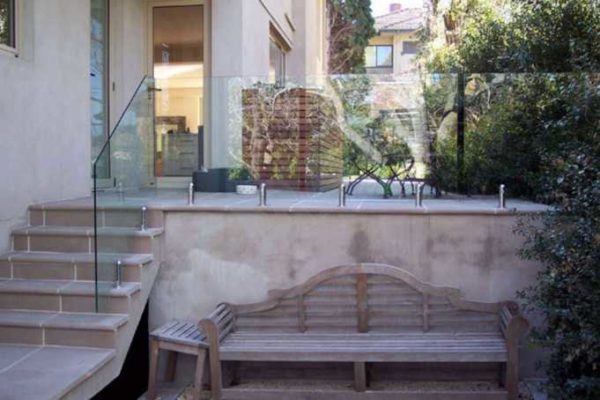
If you are afraid that the glass railings on the street could be damaged, use armored glass: it can even withstand point-blank shots
With glass it is even easier - it does not react to temperature or ultraviolet light. The only thing that can stop it is its fragility. But, if you use tempered or laminated glass, this apparent fragility. But the glass railings on the porch, balcony, terrace absolutely do not interfere with the view.
Features of metal on the street
With metal, not everything is clear, but everything is clear. If you choose a railing for stairs made of stainless, galvanized or nickel-plated pipes, you must first inquire whether they are intended for outdoor use. Yes, there is a "stainless steel" that is only for internal use.
If the stair railings are made of black metal, they will have to be painted. And you need to use paint for outdoor work. Each element must be thoroughly cleaned from rust or scale to a pure metal, primed and only then painted. This will guarantee that the outdoor stair railings will look normal for several years. The bad news is that sooner or later the paint will give up its positions, you will have to clean it, primer and paint it again. But this is inevitable and not news to anyone.
Processing of wooden railings for outdoor use
With wood, everything is both simpler and more complicated. As you know, it feels good on the street, but like black metal, it requires careful processing. Before installation / assembly, elements of wooden stair railings are impregnated with protective compounds for outdoor use. Please note that some of them paint the wood in an uncharacteristic color (red, greenish, grayish). If you plan to paint the railings with topcoat, this is not so important. But if you are only going to change the tone, make it darker or lighter, this kind of "highlighting" gets in the way, especially for light tones.
After the protective coating has dried, paint / varnish / wood oil can be applied. There are few questions with paints and varnishes: it is necessary that they be suitable for outdoor work. You can choose the tone and shine according to your taste.
It is worth saying a few words separately about oil for wood (it can be written "for terraces" and something like that). It does not create a protective film on the surface, but penetrates between the fibers, creating a protective barrier several millimeters thick. This type of protective coating is good in that when updating, there is no need to remove the old one. A new layer is simply applied over clean dried wood. Everything, no removal of old varnish or paint.Grinding - only if necessary, if some places have been wiped or damaged during operation. The disadvantage of wood oil is that it is expensive. But it's worth it.

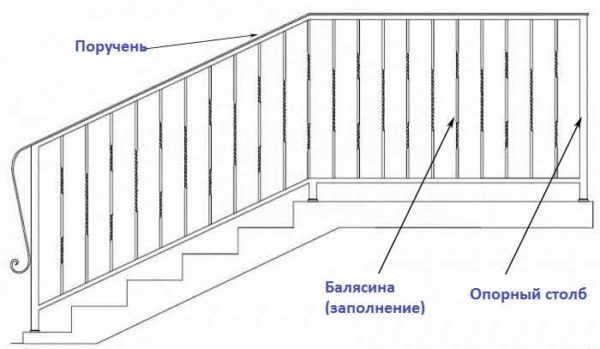
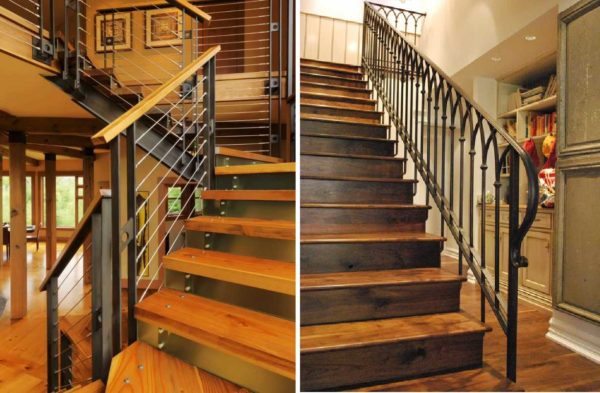
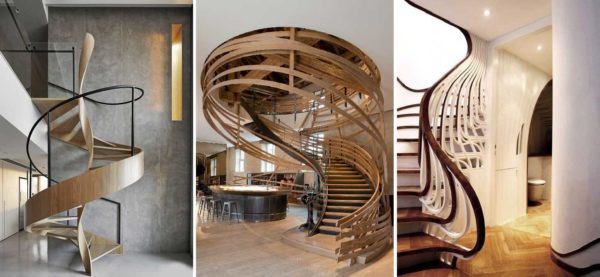
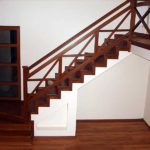

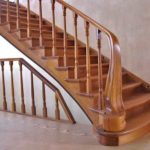
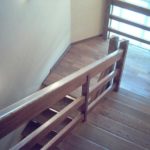
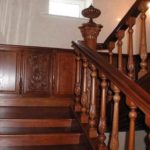
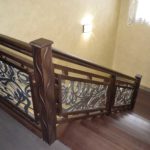
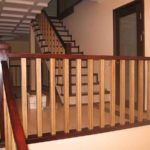
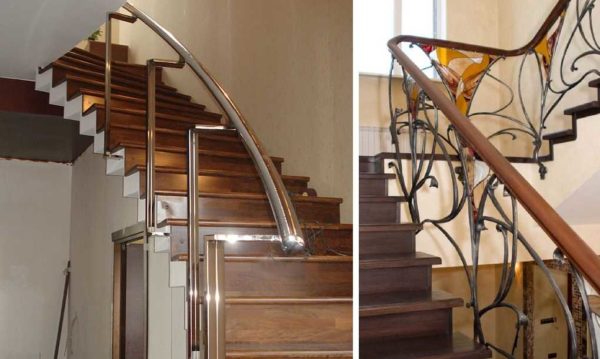
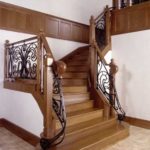
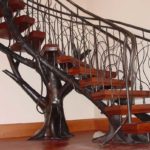
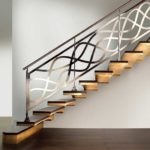
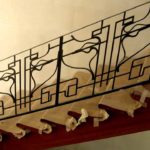
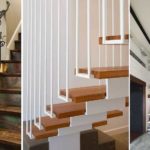
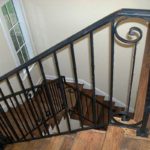

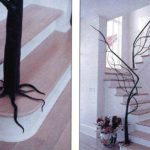
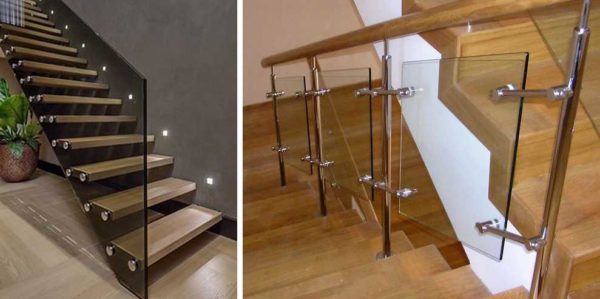
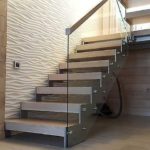
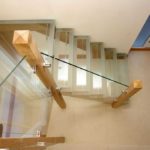

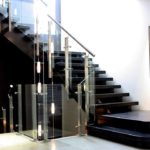

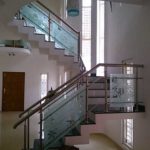
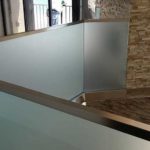
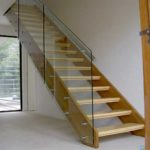
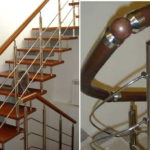
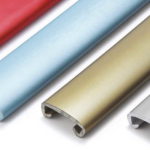
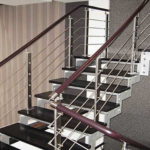

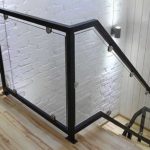
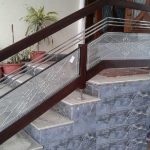
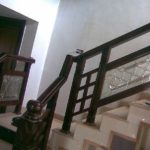
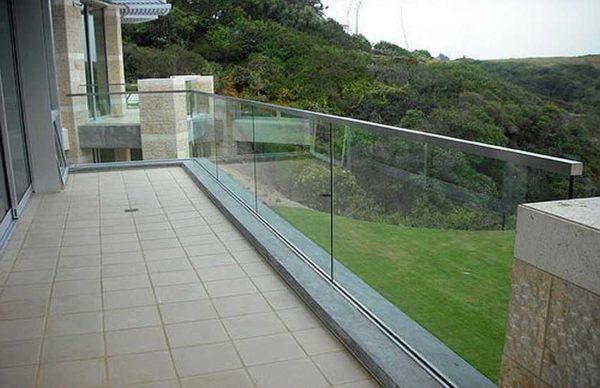
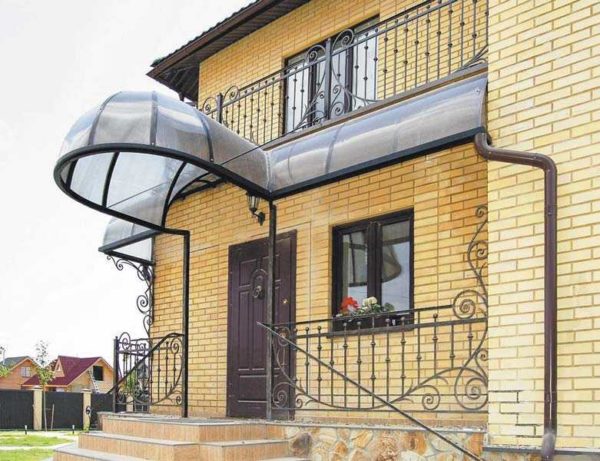
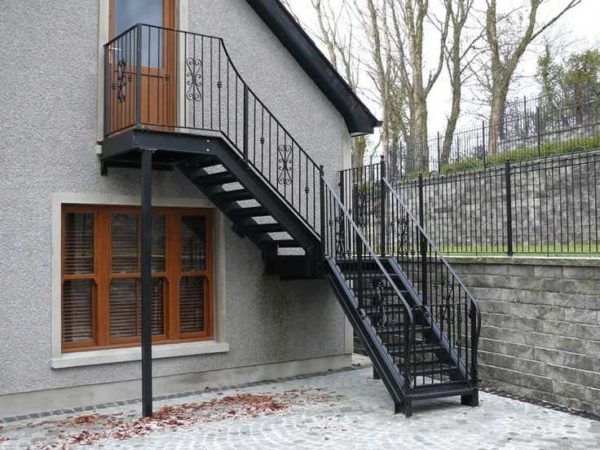
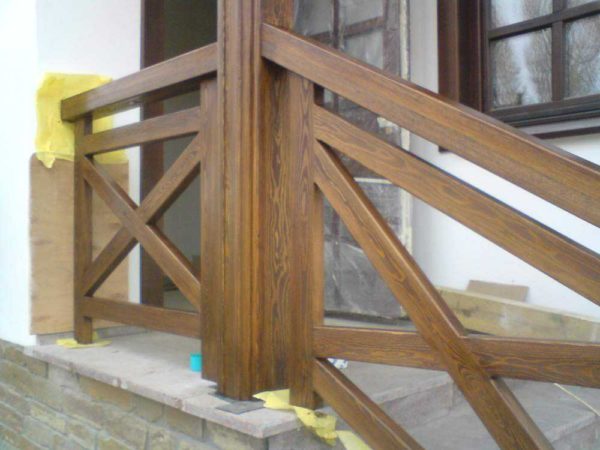
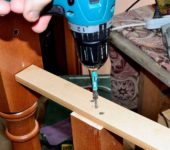
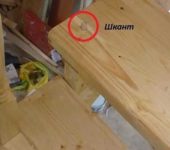
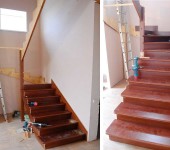





We have recently replaced the old staircase with a new one, thanks to the building's completion and reconstruction department. Our old one was made of planks by our own hands. Now a chic staircase with a more comfortable step height. Very satisfied!